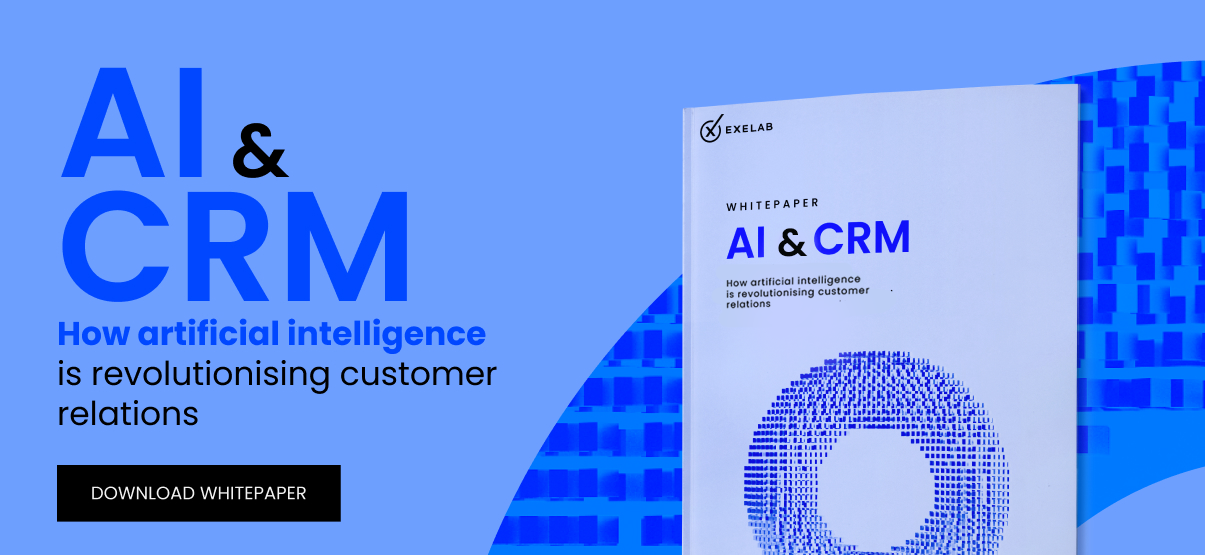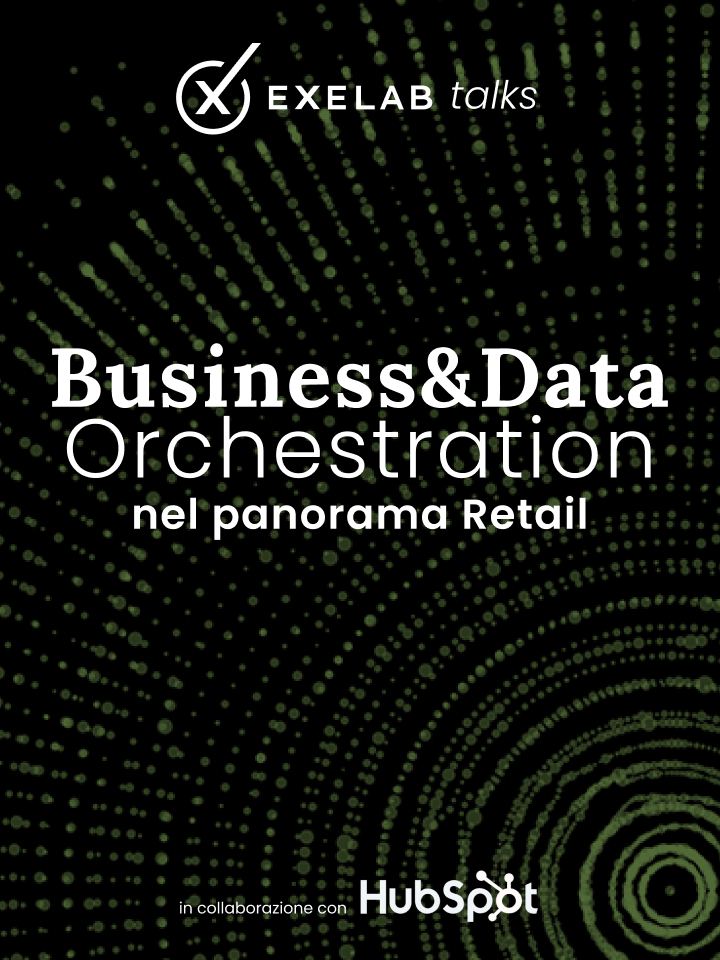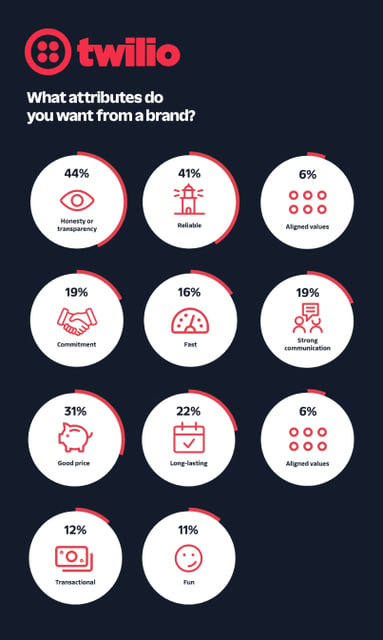
The Future of Loyalty in the Data Era
Increasingly sophisticated and personalized customer experiences...
Read moreInsights
Go to the BlogIn primo piano

The Future of Loyalty in the Data Era
Increasingly sophisticated and personalized customer experiences...
Read moreEnterprise Solutions
Recent Publications
Whitepaper

How artificial intelligence is revolutionising customer relations
Download the WhitepaperExtra
A new horizon for CRM
Automation and integration: apps

100% digital, fast and paper free processes
A new standard based on AI and HubSpot
Integrated and optimized e-commerce management with HubSpot
Exelab World
Where ideas and innovation meet
Texts to meet tomorrow's challenges
Discover our insights: visit the blog
Latest updates
Insights
Go to the BlogIn primo piano

The Future of Loyalty in the Data Era
Increasingly sophisticated and personalized customer experiences...
Read moreAbout Us
Innovation, excellence, technology: at Exelab we design the future of business processes
Exelab and The Client Group: an operational synergy to raise customer experience to the highest level
Careers
We are always looking for talent ready to make their mark: explore our opportunities
We're hiring!Exelab is an official partner of


Events
Discover our EventsMost Recent Event

Solutions
Enterprise Technology
HubSpot
Discover
About
Solutions

Exelab Solutions
Insights
Go to the BlogIn primo piano

The Future of Loyalty in the Data Era
Increasingly sophisticated and personalized customer experiences...
Read moreEnterprise Technology

Enterprise Solutions
Recent Publications
Whitepaper

How artificial intelligence is revolutionising customer relations
Download the WhitepaperHubSpot

Extra
A new horizon for CRM
Automation and integration: apps
Discover


100% digital, fast and paper free processes
A new standard based on AI and HubSpot
Integrated and optimized e-commerce management with HubSpot
Exelab World
Where ideas and innovation meet
Texts to meet tomorrow's challenges
Discover our insights: visit the blog
Latest updates
Insights
Go to the BlogIn primo piano

The Future of Loyalty in the Data Era
Increasingly sophisticated and personalized customer experiences...
Read moreAbout

About Us
Innovation, excellence, technology: at Exelab we design the future of business processes
Exelab and The Client Group: an operational synergy to raise customer experience to the highest level
Careers
We are always looking for talent ready to make their mark: explore our opportunities
We're hiring!Exelab is an official partner of


Events
Discover our EventsMost Recent Event


Employee experience – the set of perceptions that an employee has of the company in their experience working – is a crucial concept for various aspects of business management.
While on the one hand, paying attention to how employees experience the company is crucial to keeping them motivated and productive, the benefits of a quality employee experience transcend the simple well-being of workers.
A properly-looked-after EX can have a direct impact on customer experience, thus affecting not only the people within the company, but also– almost directly – the consumers.
In this in-depth analysis, we cover the topic in detail and in light of the latest research, examining how to best exploit the care of the employee experience to create a remarkable CX, so as to better help the company achieve its objectives.
To fully understand the impact of EX on CX and company objectives, we must first consider how (and how much) customer experience affects the latter in the first place.
Let's start with a brief but necessary disclaimer: customer experience is one of the main drivers behind the achievement of various strategic objectives for the company – from increasing revenue to establishing brand loyalty.
We cite, in support, some statistics of particular interest:
Premium of up to 16% for a quality experience
According to a survey published in Harvard Business Review, consumers are willing to pay a premium of up to 16% for the products and/or services of companies that offer them a quality experience.
Cumulative return of 307.3% of companies classified as “CX Leaders”
Companies classified as “CX Leaders” (according to reference indices such as Forrester Research’s CX Index) have recorded, in 13 years of observation, a total cumulative return of 307.3%.
This figure (taken from The Customer Experience ROI Study) stands at 108 points higher than the same parameter for the S&P 500 index, and is 3.4 times higher than that of companies defined as "CX Laggards".
However, the most relevant insights come from the observation of the impact that CX has on company loyalty.
In a context in which consumers are increasingly less tied to brands, creating a quality experience more than ever plays a fundamental role in achieving company objectives (starting from the establishment of brand loyalty).
As reported by The Relationship Economy Report 2023 di Twilio, people are generally disinterested in brands, with only 22% of consumers saying they are interested in long-term relationships with businesses.
This suggests a pragmatic and less sentimental approach to purchase, that prioritizes a quality experience over an emotional connection.
Consumer choices are becoming increasingly practical, and in this context, the care of CX should definitely be a major focus point in companies' strategic plans.

How can employee experience contribute to a quality customer experience?
Consider first the role of customer-facing teams, which are a crucial pivot in the relationship between consumers and brands.
The study we mentioned earlier and published in Harvard Business Review reports:
The 5 reasons that most tend to distance consumers from a brand all have to do – whether directly or partially – with the interaction that the potential customer has with the company's employees.
More specifically, the reasons concern:
Notably, these are all factors that could be improved (or even, in some cases, 'solved') with direct action aimed at taking care of employee experience.
EX which, we shall remember, includes every interaction between the employee and the company – with crucial aspects such as the sense of belonging of the worker, their general well-being, and their access to relevant information to carry out their role.
Ultimately – and referring once again to numbers – it is interesting to mention another survery, conducted by IDC, which demonstrates even more concretely the direct correlation between employee experience and CX.
According to the study, 85% of correspondents report how better care of employee experience has positively impacted customer experience, general customer satisfaction, and the organization's revenue.
Let's start covering how to make the most of EX to improve customer experience and support the company in achieving its objectives.
First of all, it is necessary to be aware of the needs that most contribute to the employee experience of customer-facing teams (and which subsequently flow into the final experience of the consumer).
The EX in these teams is first and foremost made up of practices and tools that improve the processes themselves, and allow the employees to have a better experience in the way they interact with customers (or potential such).
In this sense, in customer-facing teams (and in particular, in customer care teams), some frequent and vitally important needs emerge, among which:
All these factors concretely highlight the presence of a direct link between EX and CX, first of all providing further proof of the impact of employee experience on that of customers (e.g. more informed employee = higher quality service).
Secondly, they constitute four main areas of action on which to work to achieve a positive impact in terms of customer experience and, consequently, on the achievement of company goals.
Let's look at some ways to do this.
To improve employee experience and consequently CX, there are various approaches and tools that can be adopted.
While there are numerous solutions available, they focus mainly on better management and use of data, as well as on the use of user-friendly platforms by employees.
Let’s see some tools you can adopt to significantly improve EX and CX:
The use of CRM software that integrates data from different company databases and consumer touchpoints in one place allows you to deal with different obstacles in creating a good employee experience.
In particular, having the most relevant data available for customer-facing teams in a single interface helps to address some key problems in the use of technology in companies nowadays:
Let's consider an example related to data fragmentation.
In a company, the sales team uses software to manage orders, the marketing team uses one solution for email marketing and customer service has another for managing requests.
In the absence of a solution that integrates the whole information, the data will be scattered among the various platforms, and customer care employees will find themselves managing the various requests without a complete overview of the interactions between the consumer and the business.
This has a negative impact, at the same time, on:
All this when a CRM would allow to know the customer's history and predict his needs…
Thus contributing to the experience of employees and customers, making managing work easier for customer care, and positively affecting company objectives.
Integrating a contact center software solution can significantly support the customer care team, empowering it to do its job best.
This can impact CX both directly and indirectly, moving from an improvement, first and foremost, to the employee experience.
For example, thanks to such tools, the CC team has the ability to provide a valuable service to the company's customers, focusing its attention on human relationships and value - added activities, and delegating repetitive and low-value activities to the same tools (like, for example, dialing a phone number, searching for key information or sending an email or delivery message).
Furthermore, with multi-channel management, you can have more freedom in choosing the channel to use to reach the customer, with more decision-making autonomy and empowerment, and at the same time the chance to provide a better customer experience, thanks to the possibility for a customer to be reached on his preferred channels.
Ultimately, in this way, customer care employees can feel they have a concrete impact, perceive that their skills are valued and their needs listened to, and find themselves in the best position to offer the company's customers quality service.
Lastly, using processes or tools based on artificial intelligence and machine learning makes it possible to reach a further level of efficiency and quality of work, helping teams to increasingly focus on managing cases that really need human support.
Predictive systems, for instance, can help a revenue team prevent customer churn, or anticipate the resolution of a problem before it arises.
Real-time sentiment analysis systems allow an operator to receive support from their supervisor, even before a conversation with a customer leads to a problem.
Automation and artificial intelligence allow you to filter the data collected by the company based on pre-set criteria, and make the relevant insights available to the customer-facing teams (particularly customer care) – in an almost immediate way.
Researching solutions through AI-based chatbots trained with company knowledge, summarizing requests, and impartially categorizing conversations…
These are just a few examples of advantages that can be obtained thanks to the tools that current CRM and digital engagement software make available to companies and their employees.
This is only a brief overview of how the tools mentioned can contribute to improving EX and CX at the same time.
By acting with a strategic and holistic vision – and, by using the right tools – it is possible to significantly improve, at the same time, employee experience, customer experience, and company growth.
So far we have analyzed the correlation between EX and CX, examining how the former impacts customer experience and how important it is for strategic business objectives such as growing revenue and establishing brand loyalty.
We then saw the role that technology can have on these fundamental aspects and which tools can significantly impact them.
In Exelab, we focus precisely on this – helping large companies to integrate the best technological solutions to optimize RevOps processes, meeting their needs for flexibility, and acting with the speed that the current market requires.
We collaborate with partners like HubSpot and Twilio, turning our attention to the choice and integration of the most suitable tools to support companies in data management and in the creation of CX that positively impacts brand loyalty, revenue, and business growth.
We do this with a goal-oriented approach, aligning our work with the objectives of the companies that choose us.
You can get in touch with us and discuss the needs of your business by filling out the form found at this link, to be contacted as soon as possible by one of our consultants:
by filling out the form found at this link, to be contacted as soon as possible by one of our consultants: